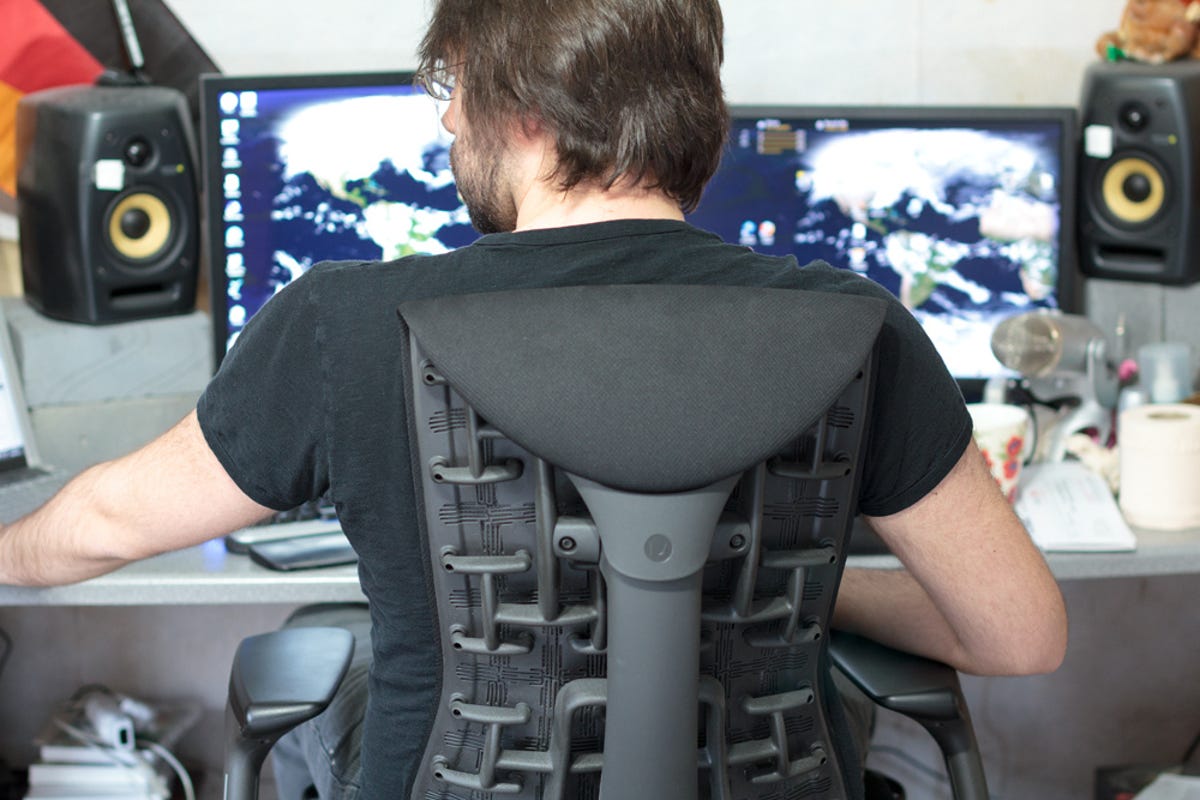Make a wake up call your wake up call video your wake up call your wake up call video wake up call army wake up call synonym wake up call ksi wake up

Wake-up call: Are you making these five ergonomics mistakes?

At some point, you've probably been given advice for making your workstation "more ergonomic." Friends and colleagues tell you to raise your monitor a little here, nudge your keyboard a little there, and maybe even purchase one of those fancy (read: expensive) chairs.
Ideally, we'd all be hearing such advice from certified ergonomics professionals. In the real world, however, most of us will likely never speak to such experts, much less have the luxury of an ergo evaluation.
If you're reading this article, you're already taking a long stride in the right direction. Get comfy while we reveal some of the most common, detrimental ergonomics-related mistakes. And look out for our complete guide to setting up your own ergonomic workstation later this week.
Mistake No. 1: Ignoring ergonomics
"Walk into any Starbucks and you'll find the problem," says Alan Hedge, a professor at Cornell University, who has been teaching, researching, and speaking about ergonomics for more than 30 years.
As he points out, we slouch, strain, and adapt to poor setups without considering the long-term effects on our bodies. Though some corporate employees benefit from an in-house ergo program, those who work from home (or a secondary spot, like a cafe), are especially likely to ignore ergonomics.
Wake-up call: Though the side effects of a bad desk setup may eventually be treated, many will follow you throughout your life. And, no, we're not just talking about a bad back.
Ignore ergonomics and you risk suffering from eyestrain and irritation, back injuries, soft tissue injuries throughout your body, and nerve compression syndromes (like carpal tunnel).
Even if you don't have free access to an ergonomics expert at work, advice from a doctor can help reduce the risk of these injuries.
Mistake No. 2: Using 'ergonomic' products
Gel wrist rests. Split keyboards. Futuristic chairs. Alienlike mice. At the risk of making you stick out among your peers, these alternative accessories promise a healthier, more comfortable work life.

Wake-up call: "Ergonomic" products are often far from that, and because the word isn't regulated, manufacturers can slap it on products that may even do more harm than good.
In fact, current research reveals that split keyboards -- and a number of other funky-looking choices -- offer little to no advantage over the flat variety, explains Hedge. Likewise, mice that force an extended wrist could contribute to the soft tissue injuries you were trying to avoid in the first place.
Mistake No. 3: Dismissing early warning signs
It turns out you're not the only one whose bottom falls asleep throughout the day, explains Prafulla Mukhi Prabhuvenkatesh, an ergonomics consultant and physiotherapist who has been practicing since 1992.
Likewise, an aching back, weak wrists, and leg pain are all side effects of a poorly arranged workstation, often dismissed as the common issues that come with a desk job.
Wake-up call: Numbness and slight pain are precursors to chronic health issues. For example, when sitting for prolonged periods of time, unexpected pressure is placed on nerves and tissue, causing a chain reaction. In the case of numb buttocks, the sciatic nerve may be compressed, causing pain down the leg and feet.
Numbness, Prabhuvenkatesh explains, is your body telling you there's something wrong. Don't ignore it. The moment you detect numbness or pain, get up and move. Then, of course, contact your doctor.
Mistake No. 4: Buying into nontraditional desks
With the abundance of research supporting the detrimental health costs of prolonged sitting, it's no surprise workers are scrambling to find other options. Beyond stand-up desks, medicine ball chairs and treadmill desks are also thrown into the mix.
You'll find dozens of blog posts and magazine articles citing the amazing life difference a standing or treadmill desk makes, but research has yet to support that such configurations are truly ideal.
Wake-up call: The answer to this standing conundrum is that there's no magic bullet. Though standing desks have received quite the hype, Hedge's own research shows that it greatly increases the risk of carotid artery disease and varicose veins. Likewise, prolonged standing can also diminish our fine motor skills.
The ideal setup is instead one that allows for both sitting and standing.
Mistake No. 5: Relying on ergonomics
Even if your desk setup is optimized to the point of perfection, that unavoidable prolonged sitting will wreak havoc on your body. Slow metabolism, a lower life expectancy, and issues related to poor circulation are still possibilities for those with the most optimized desks.
Wake-up call: Get up and move at least every hour. And we give you full permission to skip the jumping jacks and awkward stretches in your cubicle -- opt for a brisk walk around the office instead.
If you need help remembering, set an hourly alarm on your phone or computer to remind you to take a walk. And, if you're persuasive enough, maybe a colleague will join you for a walk.
Source
